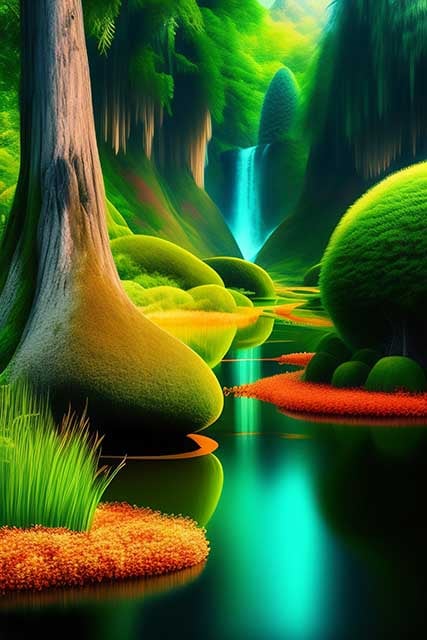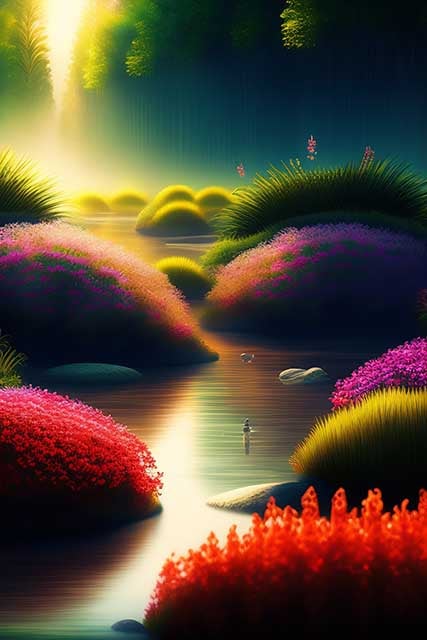Outline: Biodiversity Park
- What is biodiversity and why is it important?
- The history of biodiversity parks around the world.
- The goals of biodiversity parks.
- The future of biodiversity parks.
- A list of the top biodiversity parks worldwide.
What is biodiversity and why is it important?
Biodiversity is the variety of life on Earth. It includes all plants, animals, and microorganisms and the ecosystems they form. Biodiversity is important because it helps maintain the balance of the Earth's ecosystem and provides humans with food, fuel, medicine, and other resources.
Biodiversity is under threat from human activities such as deforestation, overfishing, and pollution. These activities can lead to the extinction of species, loss of habitat, and decline in the quality of life for both humans and other animals.
There are many ways to conserve biodiversity, such as establishing protected areas, sustainable management of natural resources, and reducing human-caused environmental impacts.
Biodiversity is essential to the continuation of life on Earth. We rely on biodiversity for food, clean water, and medicine. Biodiversity also helps to regulate the Earth's climate.
It is essential that we take action to conserve biodiversity. We can do this by establishing protected areas, sustainable management of natural resources, and reducing human-caused environmental impacts.
The loss of biodiversity is a global crisis. We must work together to conserve the Earth's resources and protect the variety of life on our planet.
Biodiversity is the key to life on Earth. We must do everything we can to protect it.
The history of biodiversity parks around the world.
 Biodiversity parks, also known as nature parks or bioparks, are protected areas of land set aside for the conservation of plant and animal diversity. These parks are usually large tracts of land, often located in remote or wilderness areas, where human activity is strictly controlled in order to minimize its impact on the natural environment.
Biodiversity parks, also known as nature parks or bioparks, are protected areas of land set aside for the conservation of plant and animal diversity. These parks are usually large tracts of land, often located in remote or wilderness areas, where human activity is strictly controlled in order to minimize its impact on the natural environment.
Biodiversity parks have existed in some form or another for centuries. The first official nature reserve is thought to have been established in 1609 in what is now Mexico City. This reserve, called the "Nuestra Seora de Guadalupe National Park", was created to protect the area around the Virgin of Guadalupe shrine from damage by cattle grazing.
In the 18th and 19th centuries, many European countries began to establish their own national parks. These early parks were often created to protect specific natural features, such as waterfalls or mountains, from development or exploitation.
The modern concept of biodiversity parks began to emerge in the mid-20th century. This new type of park was designed not just to protect specific natural features, but to conserve the entire range of plant and animal life in an area.
The first official biodiversity park was established in South Africa in 1954. This park, called the "Table Mountain National Park", was created to protect the area's unique flora and fauna.
Today, there are hundreds of biodiversity parks around the world. These parks vary widely in size, location and purpose, but all share the common goal of conserving the Earth's biodiversity.
Biodiversity parks play a vital role in the conservation of the planet's biodiversity. These parks provide a safe haven for plants and animals, and they offer a variety of benefits to the ecosystems they contain.
Biodiversity parks are an important part of the global effort to conserve the Earth's biodiversity. These parks provide a way to protect large areas of land, and they offer a variety of benefits to the ecosystems they contain.
Biodiversity parks are now found all over the world, and they play a vital role in the conservation of the planet's biodiversity.
The goals of biodiversity parks.
What is a Biodiversity Park?
 A biodiversity park, also known as a nature park or biopark, is a protected area where the primary goal is to conserve biodiversity. This can include both flora and fauna. The park may be land-based, or it may be marine-based.
A biodiversity park, also known as a nature park or biopark, is a protected area where the primary goal is to conserve biodiversity. This can include both flora and fauna. The park may be land-based, or it may be marine-based.
The goals of biodiversity parks vary, but typically they seek to:
- Preserve biodiversity
- Provide opportunities for scientific research
- Educate the public about the importance of biodiversity
- Promote sustainable use of natural resources
Biodiversity parks are important because they help to maintain the balance of nature. They provide homes for wildlife, and help to protect against the extinction of species.
For example, the Great Barrier Reef in Australia is a biodiversity park. This marine park is home to a wide variety of plant and animal life, and is a critical habitat for many endangered species. The Great Barrier Reef is also a popular destination for tourists, which helps to raise awareness about the importance of conserving biodiversity.
If you're interested in learning more about biodiversity parks, or in visiting one near you, be sure to check out the links below.
The future of biodiversity parks
 Biodiversity parks are becoming an increasingly popular way to preserve and protect local ecosystems and wildlife. There is a lot of debate about the effectiveness of these parks, but many believe that they are a vital part of conservation efforts. The future of these parks will likely depend on the success of current conservation efforts.
Biodiversity parks are becoming an increasingly popular way to preserve and protect local ecosystems and wildlife. There is a lot of debate about the effectiveness of these parks, but many believe that they are a vital part of conservation efforts. The future of these parks will likely depend on the success of current conservation efforts.
The number of biodiversity parks is expected to grow in the coming years as more countries recognize the importance of preserving their natural heritage. This is a positive trend, as these parks can play a vital role in conserving biodiversity.
However, there is a need for more research on the best management practices for biodiversity parks so that they can effectively protect and conserve biodiversity. There is also a need for more funds to be invested in biodiversity parks so that they can be properly managed and maintained.
If we can continue to make progress in these areas, the future of biodiversity parks looks promising. These parks offer a unique opportunity to preserve the world's biodiversity, and they should be given the attention and resources they need to be successful.
A list of the top biodiversity parks worldwide
The world is full of amazing places where you can find an incredible diversity of plant and animal life. These places are important not only for the species that live there but also for the opportunities they provide to learn about biodiversity and the importance of conservation. Here are five of the most biodiverse places on earth.
- Central Park in New York City, USA
Central Park is one of the most famous parks in the world, and it is also one of the most biodiverse. The park is home to over 24,000 species of plants and animals, making it one of the most diverse ecosystems in the world. The park is a great place to learn about the importance of conservation and the many different species that call the park home. - Yellowstone National Park in Wyoming, USA
Yellowstone is one of the oldest national parks in the world, and it is also one of the most biodiverse. The park is home to over 5,000 species of plants and animals, making it one of the most diverse ecosystems in the world. Yellowstone is a great place to learn about the importance of conservation and the many different species that call the park home. - Kruger National Park in South Africa
Kruger National Park is one of the largest national parks in the world, and it is also one of the most biodiverse. The park is home to over 500 species of animals, making it one of the most diverse ecosystems in the world. Kruger National Park is a great place to learn about the importance of conservation and the many different species that call the park home. - Amazon rainforest in Brazil
The Amazon rainforest is the largest rainforest in the world, and it is also one of the most biodiverse. The rainforest is home to over 10,000 species of plants and animals, making it one of the most diverse ecosystems in the world. The Amazon rainforest is a great place to learn about the importance of conservation and the many different species that call the rainforest home. - Galapagos Islands in Ecuador
The Galapagos Islands are a group of islands in the Pacific Ocean, and they are home to some of the most diverse wildlife in the world. The islands are home to over 1,000 species of animals, making them one of the most diverse ecosystems in the world. The Galapagos Islands are a great place to learn about the importance of conservation and the many different species that call the islands home.
Biodiversity is important for many reasons. It helps to maintain the balance of ecosystems, it provides opportunities for research and education, and it helps to conserve and protect endangered plant and animal species. These places are just a small sampling of the amazing places where you can find incredible biodiversity. If we want to protect the planet and its many species, we need to conserve and protect these places.